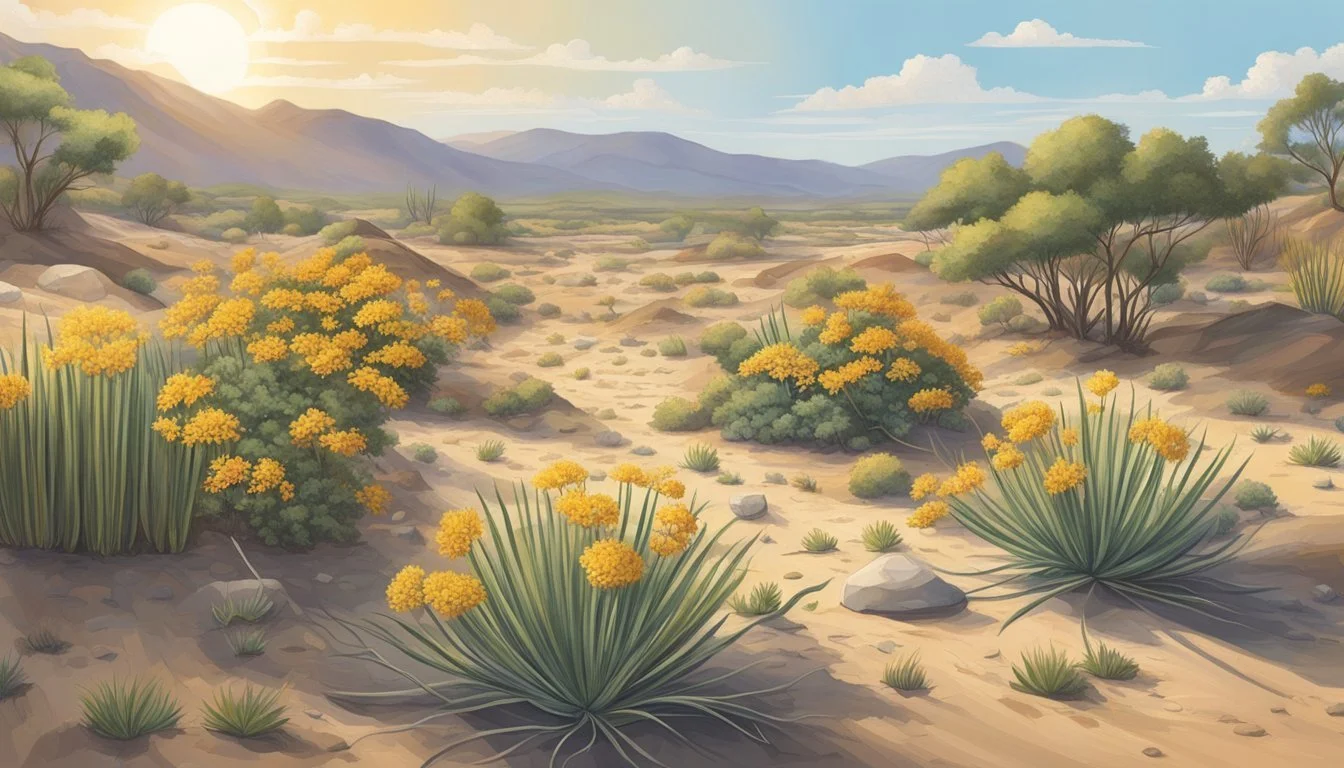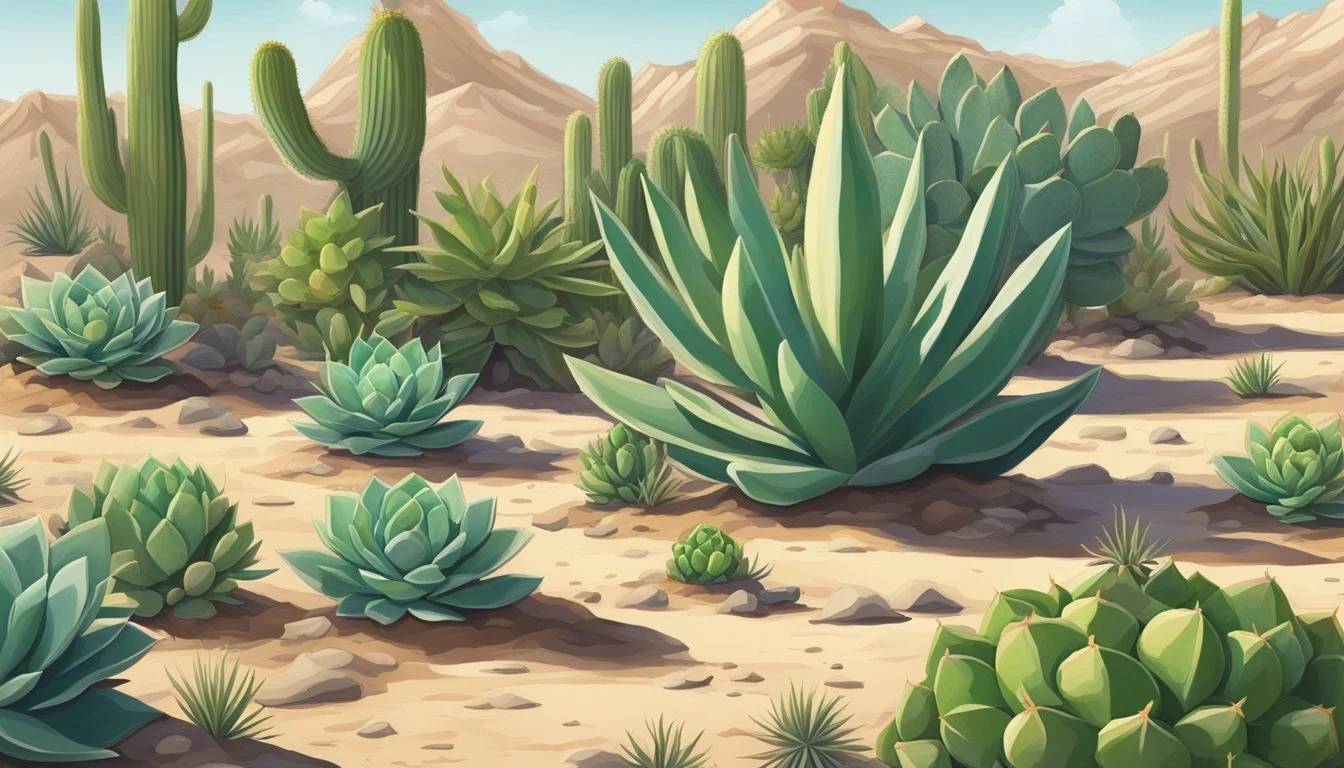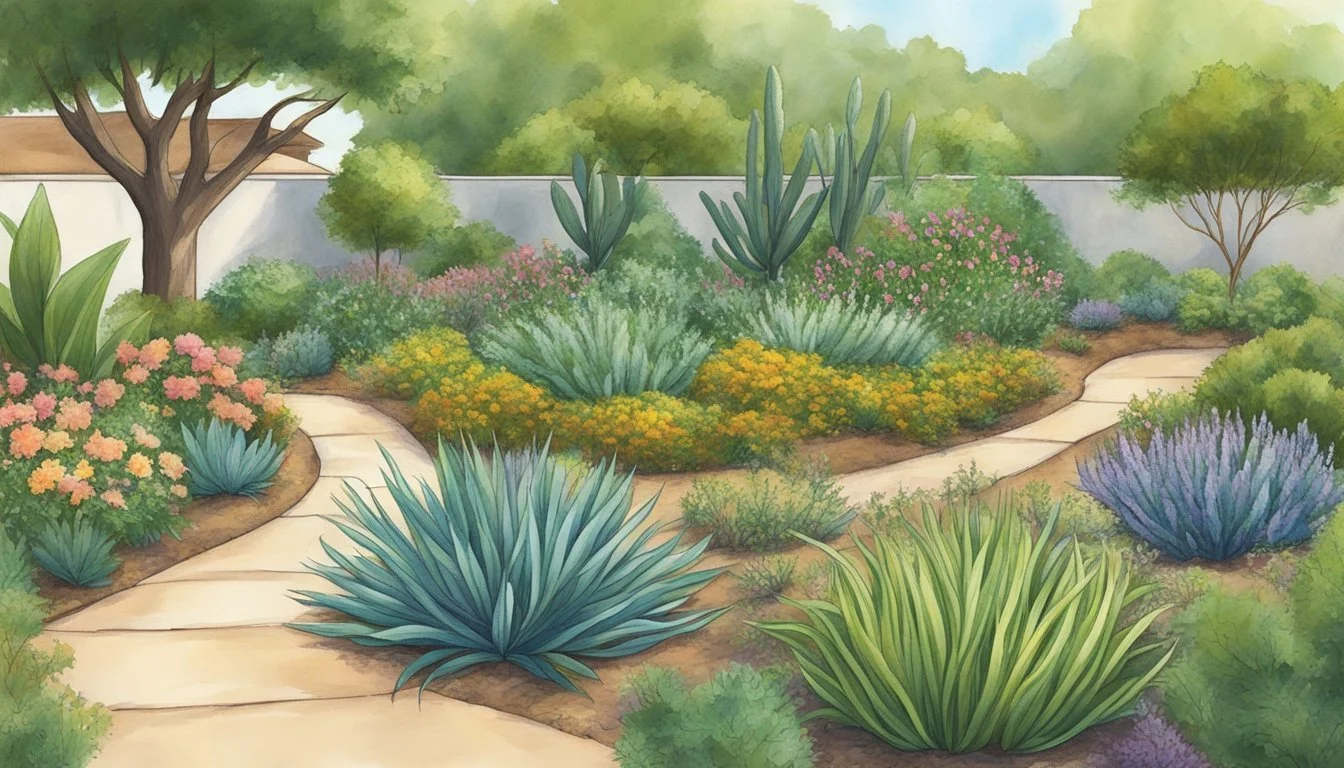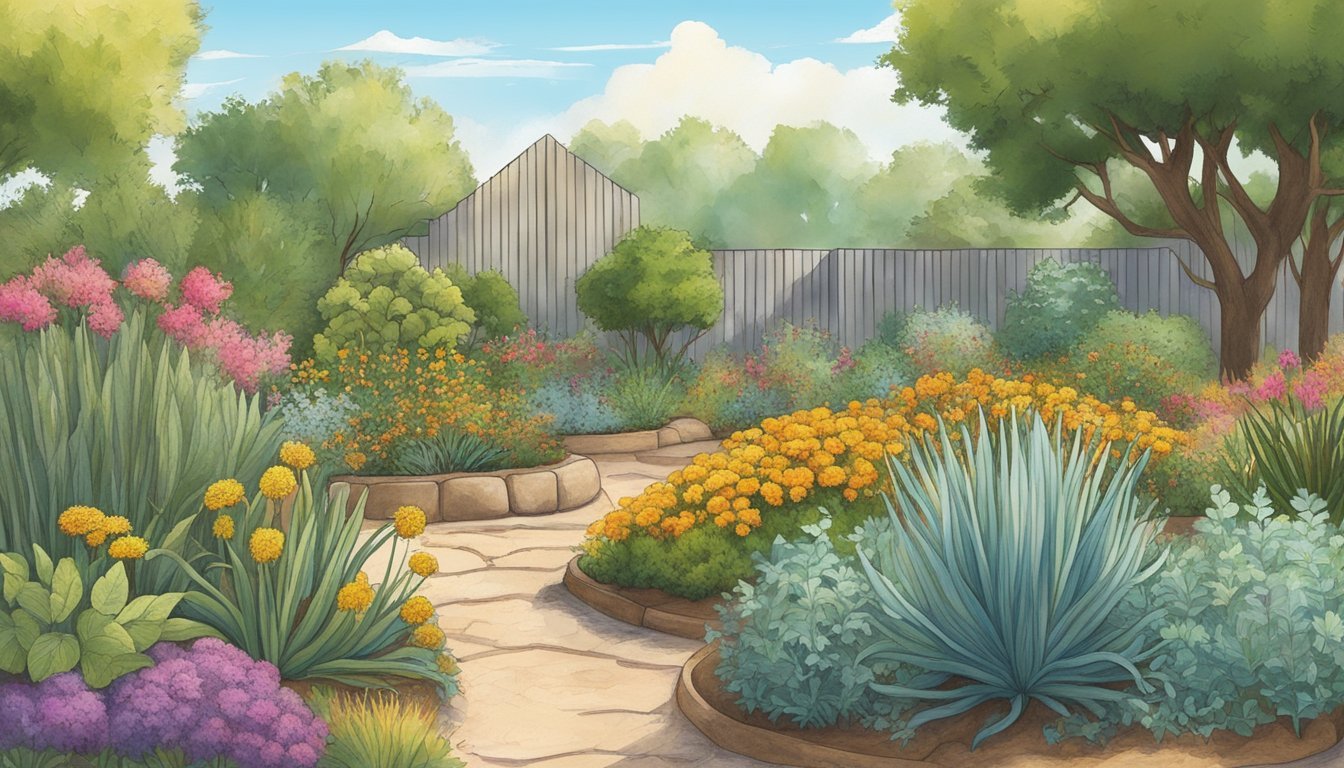Drought-Tolerant Plants in Georgia
Best Species for Water-Efficient Gardens
Drought-tolerant plants offer a sustainable solution for gardeners and landscapers in Georgia, where the climate can present challenging dry periods. By incorporating species that require minimal watering once established, residents can create lush, vibrant gardens without taxing limited water resources. These plants not only conserve water but can also reduce maintenance efforts and costs.
Georgia's varied climate zones necessitate a thoughtful selection of plant life that can thrive despite occasional water scarcity. The selection of drought-tolerant plants is vast, ranging from hardy trees that provide shade and visual interest to succulents that add texture and color with their unique forms. A well-planned garden that includes these resilient species can flourish, providing habitat for local wildlife and contributing to the biodiversity of the region.
Utilizing plants that are adapted to the local environment is not only a practical choice for water conservation; it also supports ecological balance by fostering relationships with native insects and birds. A garden filled with drought-tolerant plants is aligned with Georgia’s natural ecosystems and can serve as a cornerstone for responsible stewardship of the land.
Understanding Drought and Its Impact on Flora
Drought significantly challenges plant survival, influencing the balance and productivity of garden ecosystems. Particularly in Georgia, the impact on local flora can be profound, affecting both cultivated and wild landscapes.
Climatic Conditions in Georgia
Georgia's climate is characterized by hot summers and mild winters, with varied rainfall patterns across the state. Parts of Georgia can experience periods of reduced precipitation, leading to drought conditions that put stress on plant communities. These conditions can be particularly harsh during the warm seasons when evapotranspiration rates are high, causing soil moisture deficits.
Effects of Drought on Garden Ecosystems
Garden ecosystems are microcosms of larger ecological systems, comprised of diverse plants that have adapted to their environmental niches. Drought in Georgia can lead to a decline in garden health, as water-intensive plants suffer and the landscape changes. Prolonged dry periods can diminish plant growth, reduce flowering frequency, and even lead to plant mortality. Plants with drought tolerance are better equipped to survive, often employing deep root systems or drought-resistant foliage to conserve water. In turn, the ecological niches within these gardens may shift, favoring species with greater resilience to water scarcity.
Principles of Drought-Tolerant Landscaping
Incorporating drought-tolerant landscaping principles is essential for gardeners in regions with limited rainfall or where water conservation is crucial. Effective soil preparation, water-saving strategies, and selecting appropriate plants are key to maintaining a resilient and attractive landscape in challenging climates.
Soil Preparation and Management
Soil preparation is the foundation of a drought-tolerant garden. It involves enhancing the soil's structure to promote moisture retention without compromising drainage. In Georgia, gardeners might amend their soil with organic matter to increase its ability to hold moisture during dry spells. University of Georgia recommends testing soil to identify its specific needs, allowing for tailored amendments that optimize health and drought resistance.
Amendments: Incorporate organic materials such as compost to improve moisture retention.
Mulching: Apply a layer of mulch to reduce water evaporation and regulate soil temperature.
Water Conservation Strategies
Employing water conservation strategies is crucial in a drought-prone climate. Efficient irrigation systems such as drip lines or soaker hoses deliver water directly to the root zones, minimizing waste. Additionally, watering at the right time of day, typically in the early morning or late evening, reduces evaporation losses. Cultural practices also play a role in water conservation; for example, reducing the size of lawns or planting in berms can significantly reduce water usage.
Irrigation techniques: Prioritize drip irrigation and soaker hoses for targeted watering.
Timing: Water gardens during cooler parts of the day to limit evaporation.
Suitable Plant Selection
Choosing plants adapted to the local climate is pivotal for a drought-tolerant landscape. Native and adapted non-native species often have innate characteristics that allow them to thrive in dry conditions. The selection should focus on plants that require minimal water once established and contribute to the overall landscape aesthetics. Gardeners can consult resources such as those from the University of Georgia to identify plants that are both beautiful and resilient to drought.
Native plants: Opt for species naturally accustomed to local climate conditions.
Adapted plants: Include non-native plants known for their drought tolerance.
Drought-Tolerant Plant Categories
Drought-tolerant plants in Georgia fall into several categories, each offering a variety of species that can thrive in the state's often dry conditions. These range from robust trees to delicate-looking perennials, all providing benefits for local wildlife and requiring minimal water once established.
Native Trees and Shrubs
Native trees like the Southern Live Oak provide excellent shade and can withstand dry periods with their deep root systems. Shrubs such as the Butterfly Bush attract butterflies with their colorful blooms, while also being drought-tolerant.
Trees:
Southern Live Oak – full sun, shade tree
Eastern Redbud – colorful spring flowers
Shrubs:
Butterfly Bush – attracts butterflies, colorful
Fragrant Sumac – textured foliage, wildlife-friendly
Resilient Perennials and Ornamentals
Perennials such as Yarrow offer a variety of colors while adapting well to low-water conditions. Ornamental grasses add form and texture to the landscape without requiring extensive maintenance.
Perennials:
Yarrow – colorful flowers, pest-resistant
Georgia Blue – hardy, vibrant blue flowers
Ornamentals:
Maiden Grass – graceful form, drought-tolerant
Fountain Grass – soft texture, for full sun
Hardy Groundcovers and Vines
Groundcovers like Stonecrop and Vines such as Crossvine are capable of covering large areas with minimal watering needs. They provide a green carpet that enhances the garden's visual appeal while reducing soil erosion.
Groundcovers:
Stonecrop – succulent leaves, drought-tolerant
Creeping Juniper – low maintenance, full sun
Vines:
Crossvine – produces trumpet-shaped flowers
Carolina Jessamine – evergreen with bright yellow blooms
Featured Drought-Resistant Plants in Georgia
When selecting plants for a Georgian landscape that must endure dry conditions, it's prudent to choose species that naturally thrive with limited water. The following recommended trees, shrubs, perennials, and grasses have proven to be resilient and suit well to Georgia's climatic zones.
Trees
American Hornbeam (Carpinus caroliniana): Known for its attractive blue-green foliage and adaptability, the American Hornbeam is a native tree that can withstand dry periods once established, making it a suitable choice for Georgia's landscape.
Sweetgum (Liquidambar styraciflua): This native tree dazzles with a display of yellow, orange, and purple fall leaves, and possesses an innate resistance to drought, contributing to its popularity in the region.
Sugar Maple (Acer saccharum): With its stunning fall coloration and a reputation for drought tolerance once mature, the sugar maple stands out as an exceptional choice for Georgian landscapes.
Sourwood (Oxydendrum arboreum): Revered for its cascades of fragrant white summer flowers and vibrant red fall foliage, sourwood thrives in well-drained acidic soils and is well-adapted to the dry conditions often experienced in Georgia.
Shrubs
Yucca: This robust genus includes plants like Yucca filamentosa, which feature striking sword-like leaves and a remarkable tolerance for drought, making them ideal for the dry Georgian climate.
Azalea: Offering an array of varieties, azaleas, including the native Flame Azalea (Rhododendron calendulaceum), are widely appreciated for their spring blossoms and adaptability to drier conditions after becoming established.
Southern Magnolia (Magnolia grandiflora): With its large, glossy leaves and impressive, fragrant white flowers, the southern magnolia is prized for its ability to handle periods of drought.
Perennials
Lavender (Lavandula): Lavender's aromatic foliage and purple spikes of flowers make it a favorite among drought-tolerant perennials, thriving in full sun and well-drained soils.
Coneflower (Echinacea spp.): Highly favored for perennial borders, the coneflower blooms generously, displaying resilience to drought and attracting a host of pollinators to the garden.
Gelsemium sempervirens: Often known as Carolina Jessamine, this evergreen climbing plant produces vibrant yellow flowers and is noted for its drought resistance and performance in Georgia's climatic conditions.
Grasses and Groundcovers
Grasses: Ornamental grasses like maiden grass (Miscanthus sinensis) are drought-tolerant and effective in creating texture and movement within the garden; they're ideally suited for Georgia's zones 7 to 9.
Groundcovers: Options like creeping thyme and stonecrop sedum offer a resilient solution for covering dry soils, both featuring attractive flowers and a robust nature against drought conditions.
Cultivation and Care for Resilient Species
For gardeners in Georgia seeking drought-tolerant plants, understanding the precise techniques for planting and maintenance is crucial. Both native and non-native species have specific requirements to thrive with minimal water.
Planting Techniques and Timing
Planting should be timed to coincide with the optimal growing season for each species. Okra, for example, should be sown directly into the garden from April to June or a second window from June to July. Transplanting is commonly more successful in the cooler temperatures of early fall, allowing plants to establish before the heat intensifies.
Seeds should be planted at the correct depth, with consideration for soil conditions to maximize root growth and access to moisture. Irrigation methods at this stage can range from drip systems to soaker hoses, facilitating deep watering that encourages strong roots and reduces evaporation.
Maintenance and Disease Prevention
Once plants are established, maintenance should focus on minimizing stress. Supplemental watering might be necessary during extended dry periods, ideally in the morning to reduce fungal diseases. Non-native plants often require more attentive care, as they may not be fully adapted to local conditions.
Strategic landscaping can also help. Grouping plants with similar water needs together can conserve water and reduce competition. To prevent insects and disease, natural predators can be introduced and diseased foliage should be removed promptly.
Mulching is beneficial for retaining soil moisture and reducing weed growth, which can also serve as a food source for pests. For aesthetic considerations, select plants that provide fall color or fragrance to enhance the garden's sensory appeal, while still adhering to water-wise principles.
Supporting Garden Wildlife with Drought-Resilient Plants
In Georgia, gardeners have the unique opportunity to enhance wildlife habitat by incorporating drought-resilient plants. These plants require minimal irrigation, thereby conserving water and providing a sustainable environment for local fauna.
Native plants are particularly beneficial as they coevolved with the region's wildlife. They offer ecological niches specific to various species, such as birds, butterflies, and insects, creating a mosaic of life in the garden. For instance:
Wildflowers like the Purple Coneflower attract pollinators and serve as host plants for butterfly larvae.
Shrubs such as the Georgia-native Inkberry Holly provide berries for birds and serve as protective cover.
Strategically selected drought-tolerant natives, such as:
Plants Wildlife Benefits Coreopsis Essential food for caterpillars and a nectar source for butterflies and bees. Salvia Attracts hummingbirds with its tubular flowers. Goldenrod Supports over 100 species of insects, crucial for birds during the breeding season.
These plants, once established, flourish with minimal maintenance, thus supporting local wildlife while promoting water conservation. Gardeners who incorporate such plants are rewarded with a diverse range of species visiting their gardens, showing how residential landscapes can contribute to larger conservation goals.
Resources for Georgia Gardeners
For gardeners in Georgia looking to enhance their gardens with drought-tolerant plants, there are numerous resources available to help you select the right plants and adopt sustainable gardening practices. These resources range from local gardening communities that provide practical advice to extensive educational materials offered by the University of Georgia.
Local Gardening Communities
Georgia is home to a thriving community of gardeners and horticulturists who often gather in local gardening groups and societies. The Georgia Native Plant Society is an exemplary organization dedicated to promoting the use of indigenous plants in Georgia gardens. They offer numerous programs and workshops that address plant selection, cultural practices, and ecosystem preservation. Gardeners can also participate in plant rescues, sales, and garden tours that can be excellent opportunities for learning and networking.
Workshops and Events: Interactive sessions on native landscaping.
Plant Rescues: Efforts to save native plants from development sites.
Sales and Tours: Opportunities to purchase native plants and see mature plants in local gardens.
Educational Materials from University of Georgia
The University of Georgia stands at the forefront of agricultural and environmental education, providing gardeners with a wealth of information on landscape plants suited to the state's climate. Through their extension service, gardeners can access publications such as "Native Plants, Drought Tolerance, and Pest Resistance" offering insights into how to successfully manage a drought-tolerant garden.
Publications: Guides and fact sheets on various gardening topics.
Research Findings: Up-to-date information reflecting the latest horticultural studies.
Master Gardener Programs: Courses aimed at giving gardeners a more profound horticultural education.
By tapping into these comprehensive networks and resources, gardeners can successfully cultivate their Georgia gardens with plants that are not only beautiful but also resilient to the local climate conditions.
Frequently Asked Questions
Selecting the right plants that can withstand drought can help maintain a flourishing garden in Georgia's fluctuating climate. Here are some common inquiries gardeners have regarding drought-tolerant flora in the region.
What are some top drought-resistant plants suitable for Georgia's climate?
For a garden in Georgia, plants like the Lantana, Gaillardia, and Russian Sage are excellent choices due to their resilience in dry conditions. The University of Georgia Cooperative Extension provides more insights on native species that perform well in the local environment.
How do I choose the best drought-tolerant plants for landscaping in Georgia?
When selecting plants for drought-prone areas, it’s essential to consider not only drought tolerance but also how well they adapt to Georgia's soil and weather patterns. Consulting resources such as Walter Reeves: The Georgia Gardener can offer guidance on plant selection.
Which low-maintenance outdoor plants thrive in Georgia's full sun conditions?
Sedums and Coneflowers are known for their low-maintenance requirements and ability to thrive in full sun conditions in Georgia. They are often highlighted for their ease of care once established and adaptability to intense sunlight.
What are the recommended evergreen plants that are drought-tolerant in Georgia?
Evergreen plants such as Junipers and Yuccas are robust options for maintaining year-round foliage without needing frequent watering. These varieties have adapted to dry conditions and retain their leaves throughout all seasons.
Could you suggest some heat-tolerant plants ideal for Georgia gardens?
Heat-tolerant plants, such as Crepe Myrtles and Salvia, are perfect for Georgia gardens due to their ability to endure the heat and still provide vibrant colors and textures to the landscape.
What are the best options for outdoor plants in Georgia that require minimal watering?
For outdoor plants that demand minimal watering, consider incorporating Succulents, Agave, or Ornamental grasses into your garden. They have notable drought resistance and are well-suited for Georgia's climate. The Garden Lovers Club has a selection of drought-tolerant plants suitable for the state.









